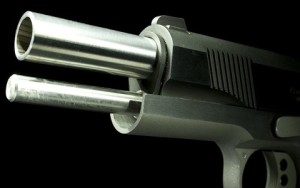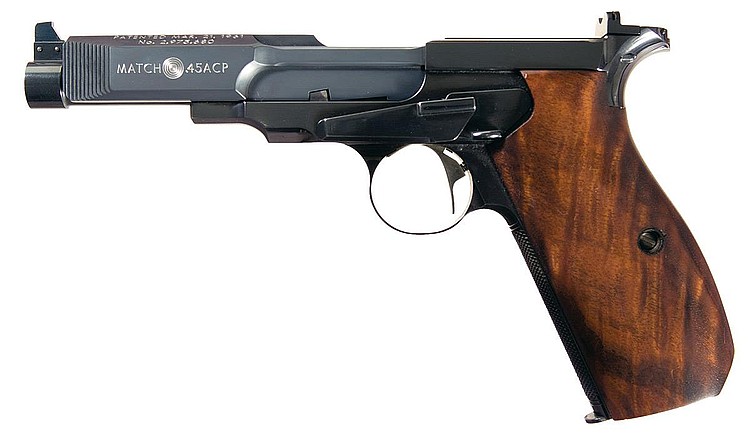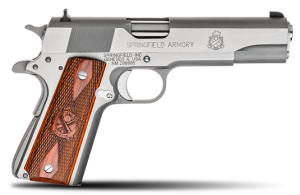What is the purpose of a full-length guide rod on a 1911? What is the difference between a full-length guide rod and a shorter standard length one? FLGR vs GI?
First things first: the guide rod on a 1911 keeps the recoil spring compression tidy during the rearward travel of the slide during operation.

1911 with standard guide rod
The original issue 1911 had a short “G.I. style” guide rod (approximately 1.75″ Government, 1.25″ Commander). The full-length guide rod (FLGR, approximately 4″) was introduced in the 1960s and was purported to “prevent kinking of the recoil spring and insure a smooth recoil action” and “add some weight to the muzzle end of the weapon” to “steady the gun during firing and reduce recoil upon firing.”
There have been several articles, experiments, anecdotes and opinions published online and in print discussing the merits of a full-length guide rod on a 1911. The overwhelming consensus is that a full-length guide rod does little to actually improve the recoiling action or prevent kinking of the recoil spring during recoil. Most if not all shooters would be unable to tell the different between the standard short guide rod and a full-length.

1911 with full-length guide rod
There is some truth to the notion that a full-length guide rod adds some weight to the muzzle end of the pistol; however, the weight difference on average is relatively minor and therefore the effect is relatively minor. A standard short guide rod in 416 stainless steel weighs around .75 oz. A full-length guide rod weighs twice as much (~1.5 oz.) while a tungsten FLGR weighs in around 3-3.2 oz.
By itself, an additional ounce or two will not noticeably reduce muzzle flip, but a tungsten guide rod in combination with a bull barrel and/or full-length dust cover may together add enough weight to provide a noticeable difference.
In truth, a full-length guide rod is usually there for looks. That may be the only benefit provided by a FLGR.
Most opponents of the full-length guide rod will tell you:
- A full-length guide rod complicates field stripping and usually requiring a take down tool.
- A full-length guide rod inhibits one-handed racking of the slide on a table edge or other surface in an emergency.
- The venerable John Moses Browning did not design the original 1911 with a full-length guide rod.
While all of these are technically true, most of us aren’t field stripping our pistols “in a field” or in a fox hole, and requiring a take down tool and a few extra seconds during cleaning isn’t a major inconvenience. In a pinch, a paperclip, pin or piece of wire can be used in place of a take down tool. There are many who find field stripping with a FLGR much easier since there’s no need to fight with the recoil spring or plug when reassembling.
One-handing racking of the slide by pressing the bottom half of the muzzle against a table edge or similar may prove useful in a home or self defense scenario but, while a common refrain, I’m not sure how often this has been the difference between life and death for anyone. If your 1911 is for HD or SD and you can imagine a situation where your second hand may be otherwise occupied, a FLGR may not be for you.
As for it not being a JMB original, there are a lot of things on our 1911s that weren’t in JMB’s original design. Tactical rails, beavertails, magwells, ramped barrels, target sights, lowered ejection ports and numerous other additions all come standard on production models today and were added post-JMB. The purist may shun such additions, but that’s one of the greatest things about a 1911: they can be customized, personalized and made completely unique to your needs.
If your particular style calls for a FLGR, sport it with pride.





